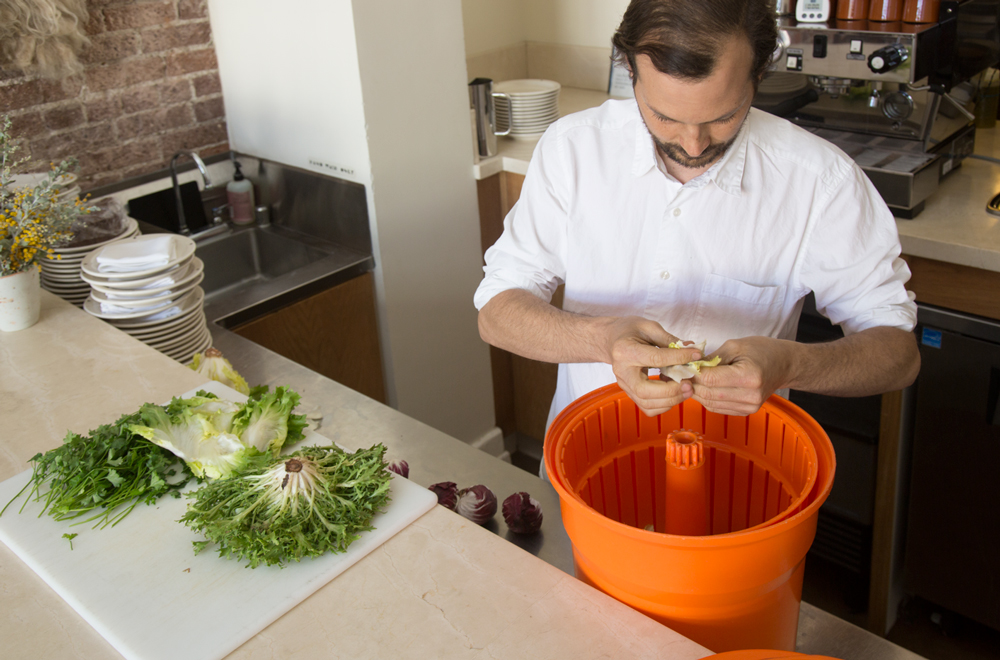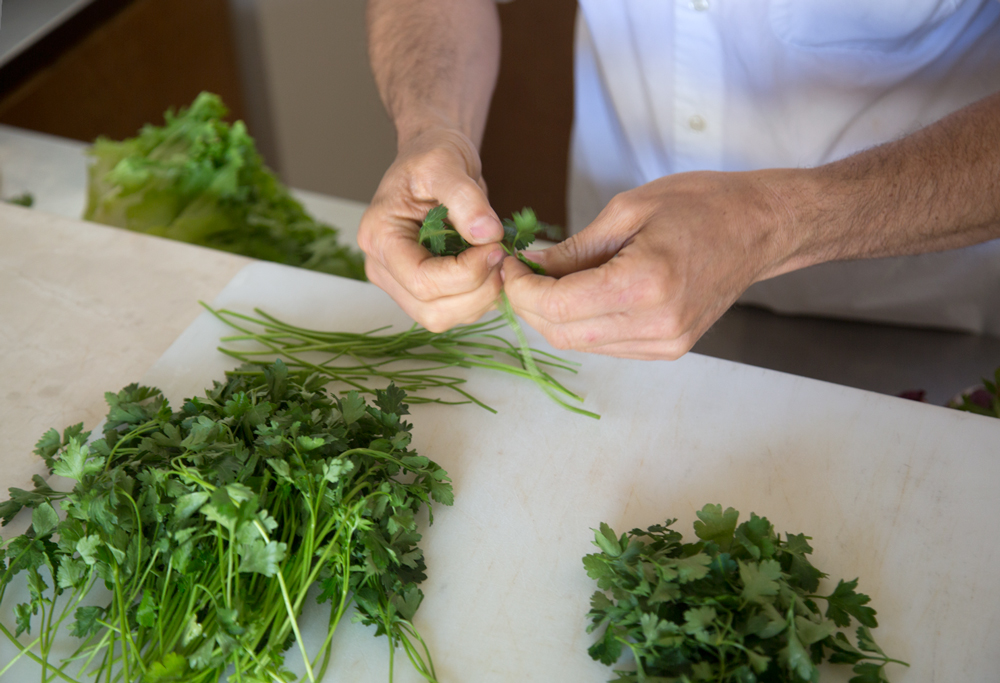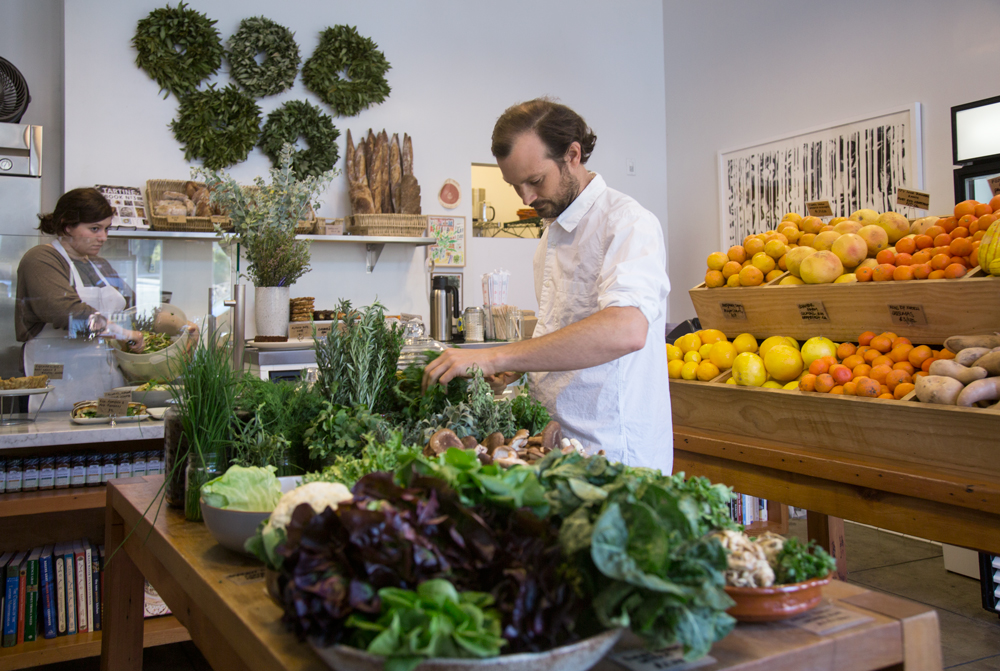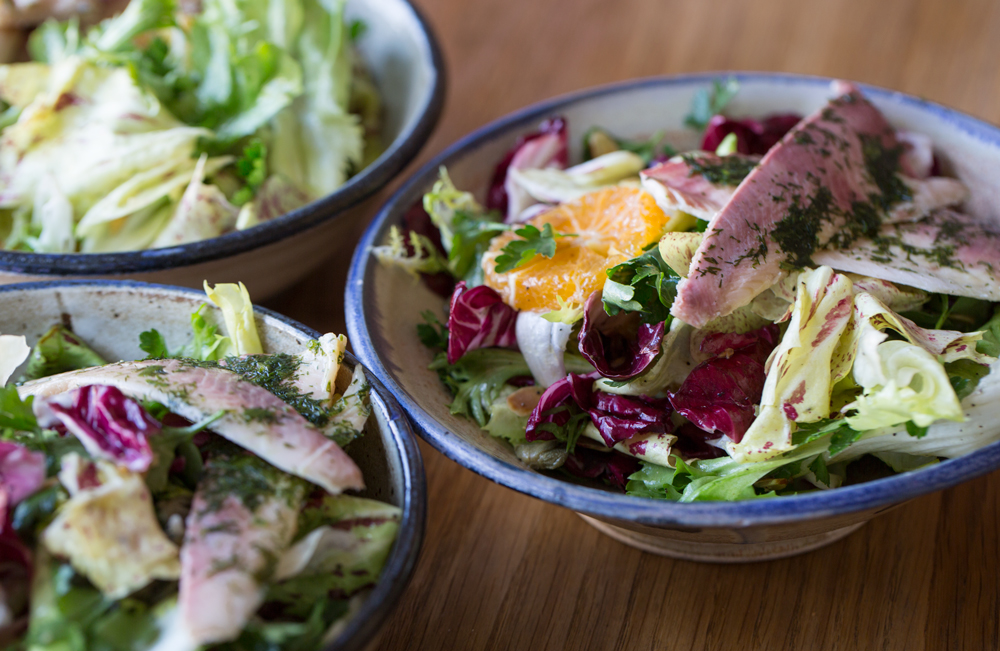Mixed Chicory, Smoked Trout, Orange, Toasted Almonds Capers and Parsley Salad
Robert’s Trout Salad
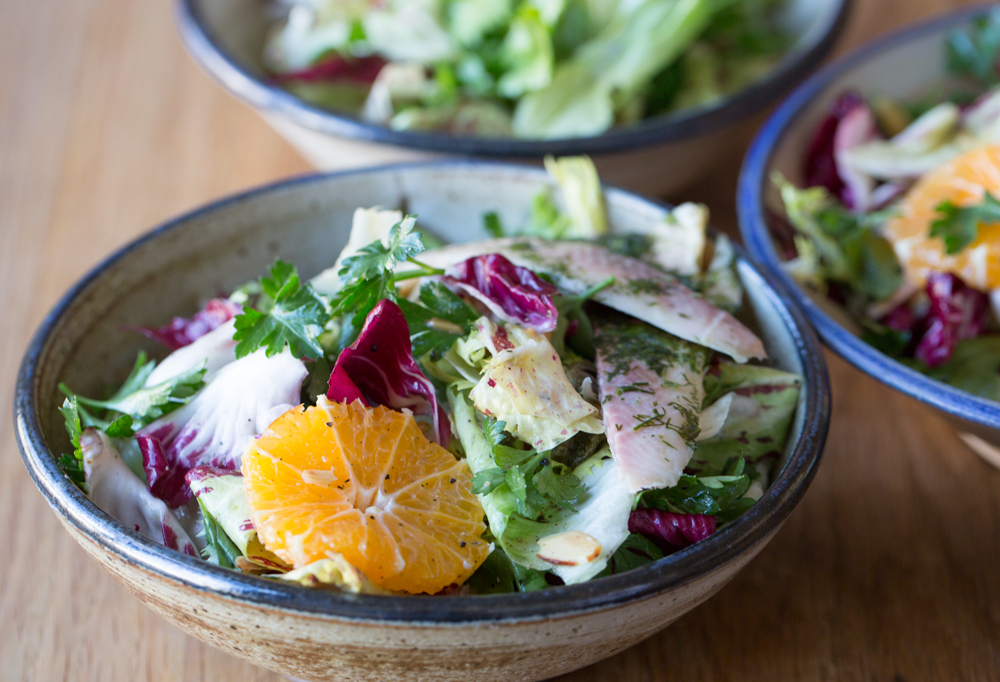
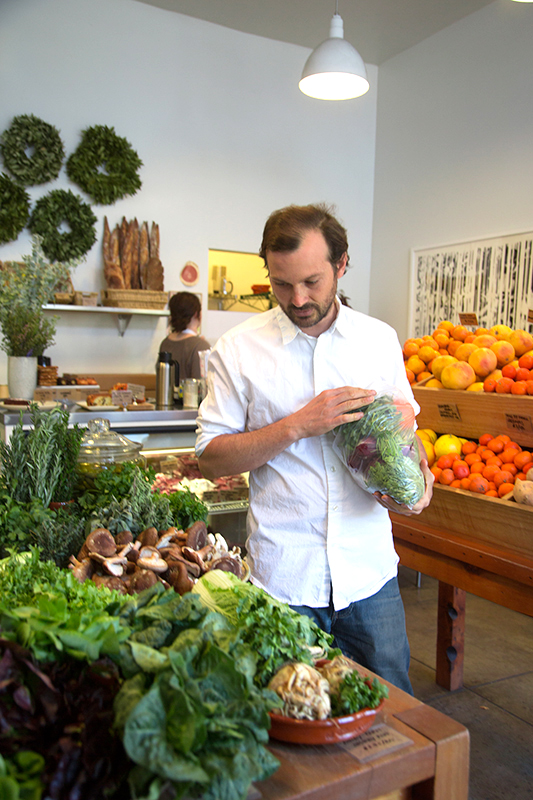
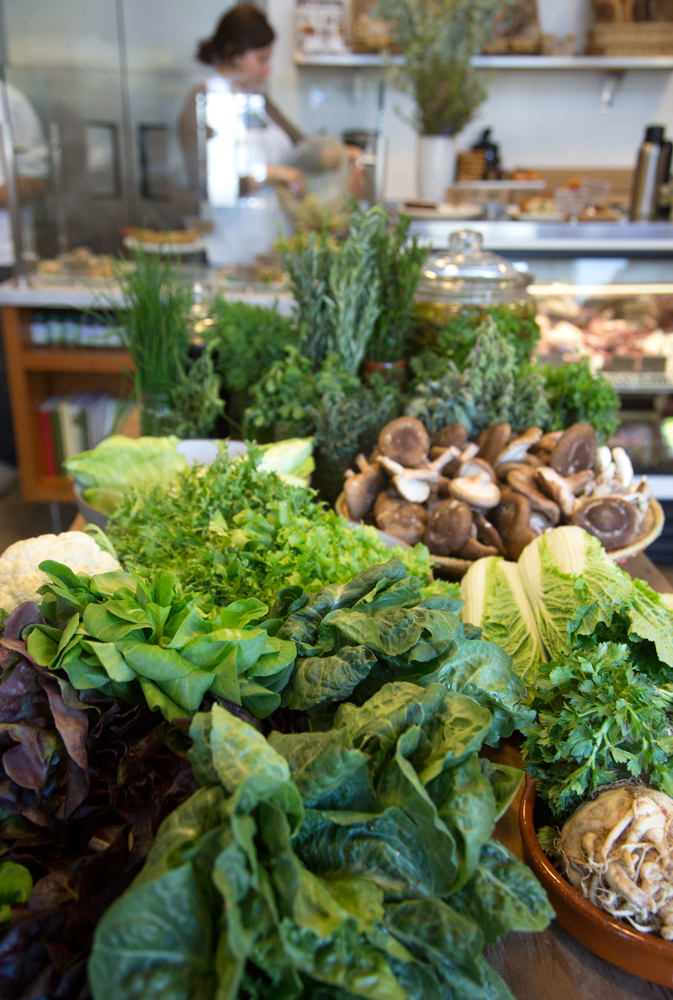
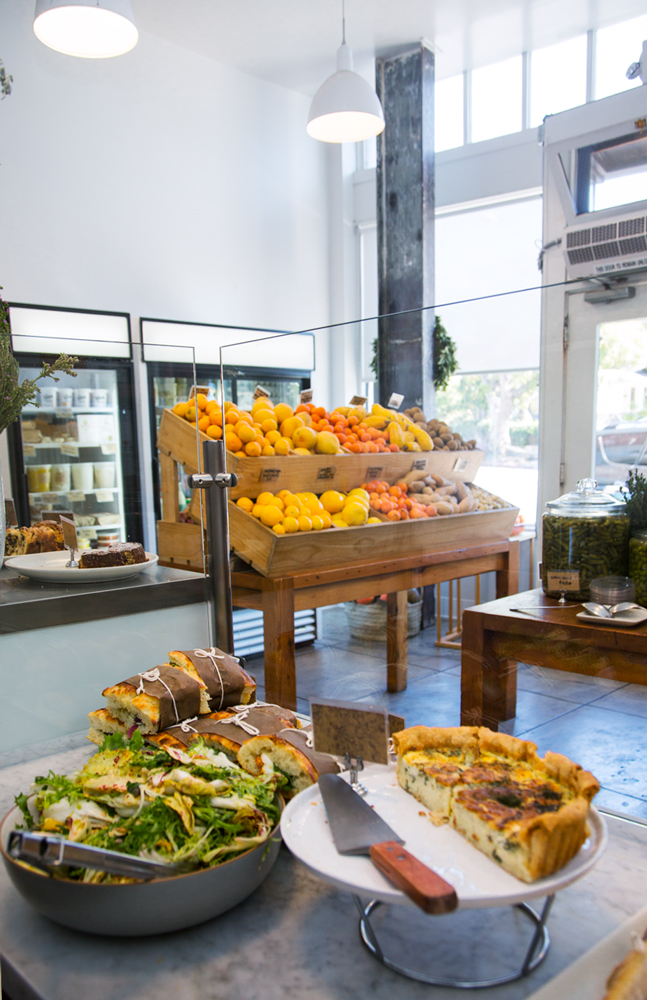
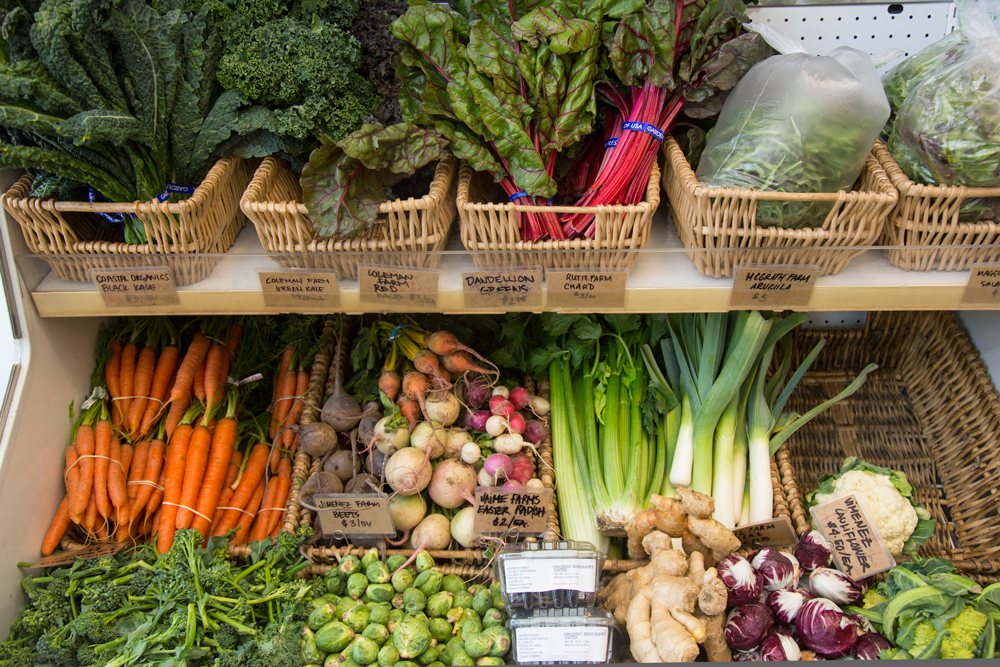
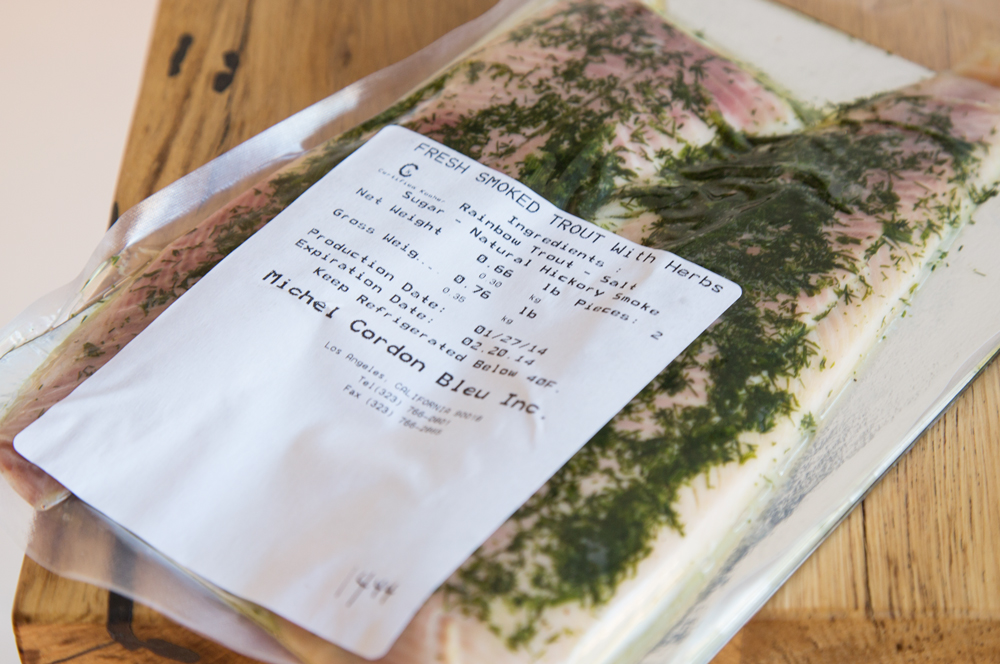
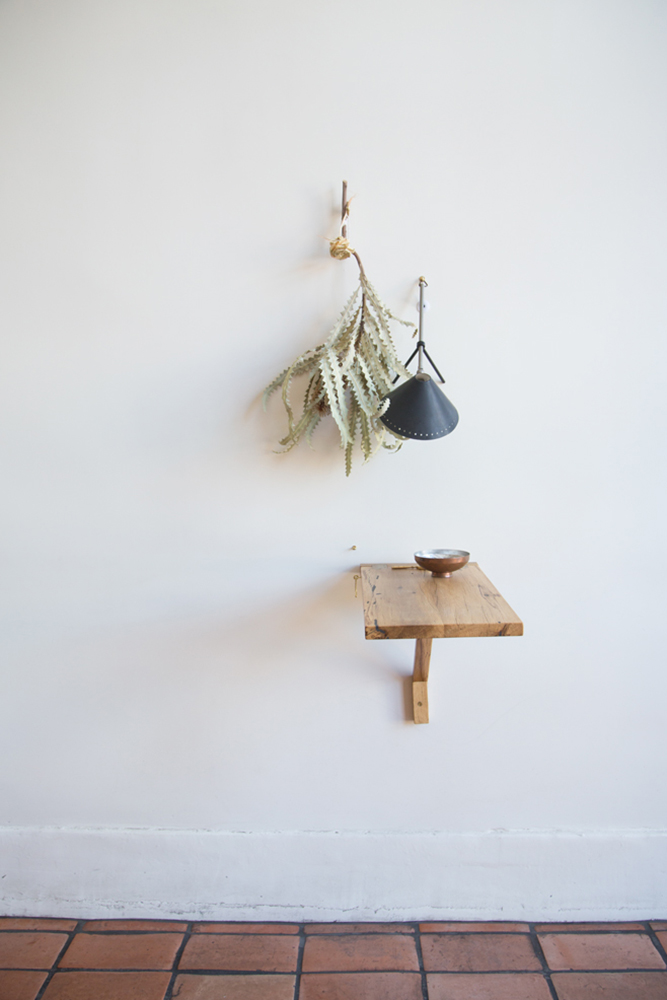
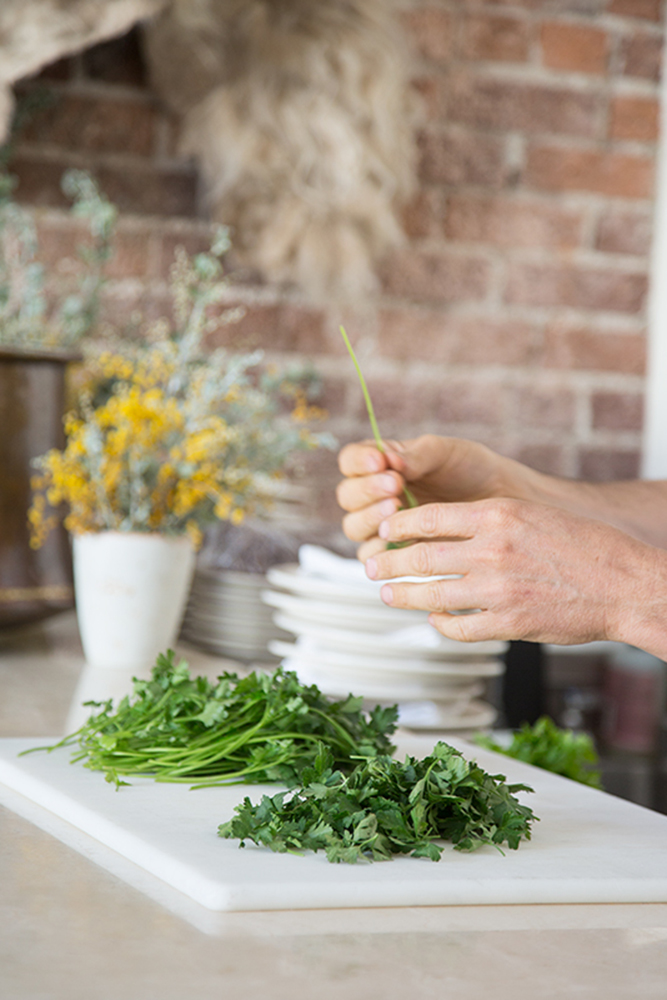
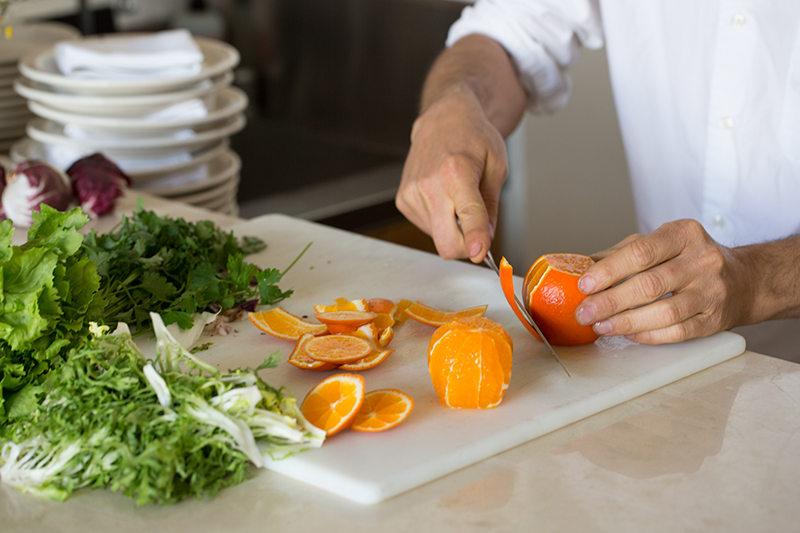
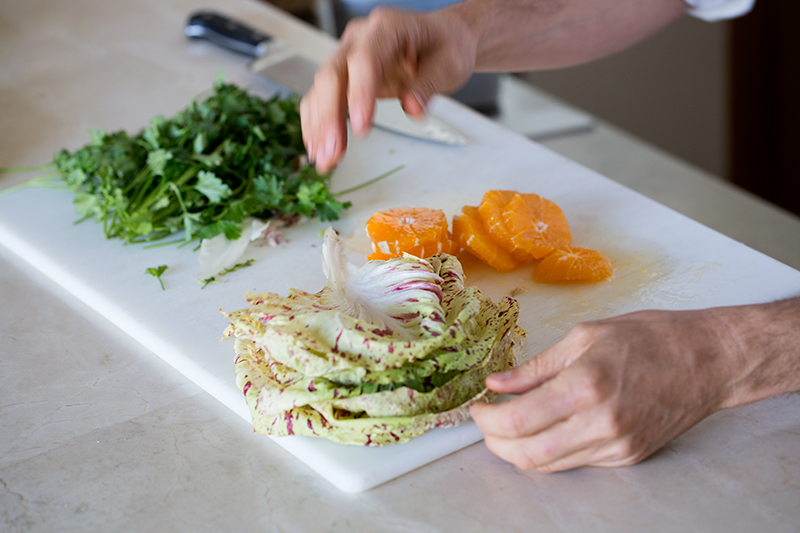
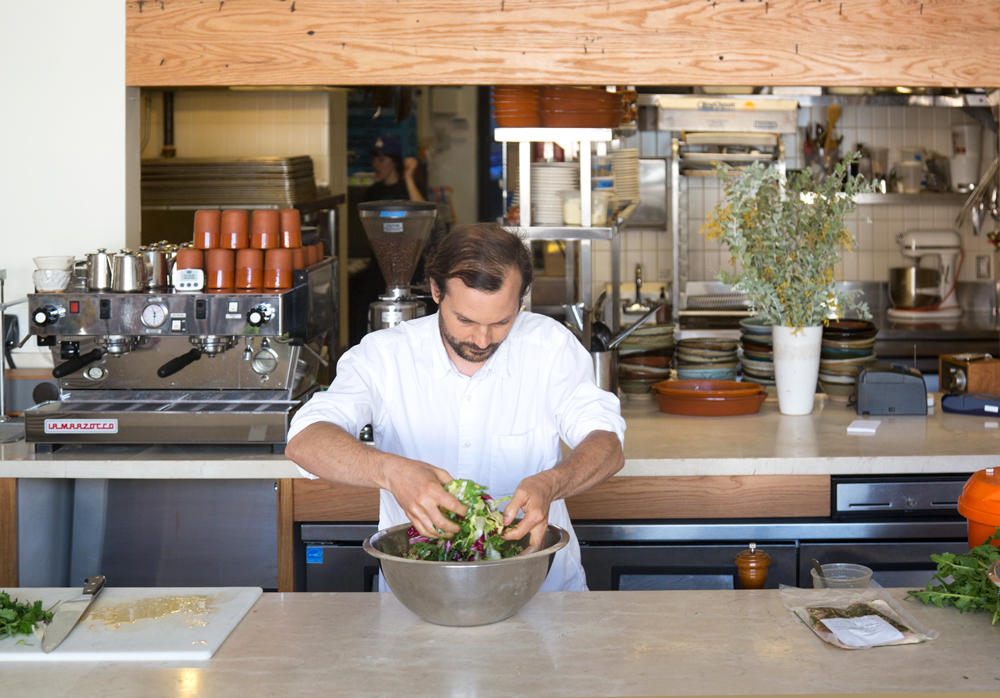
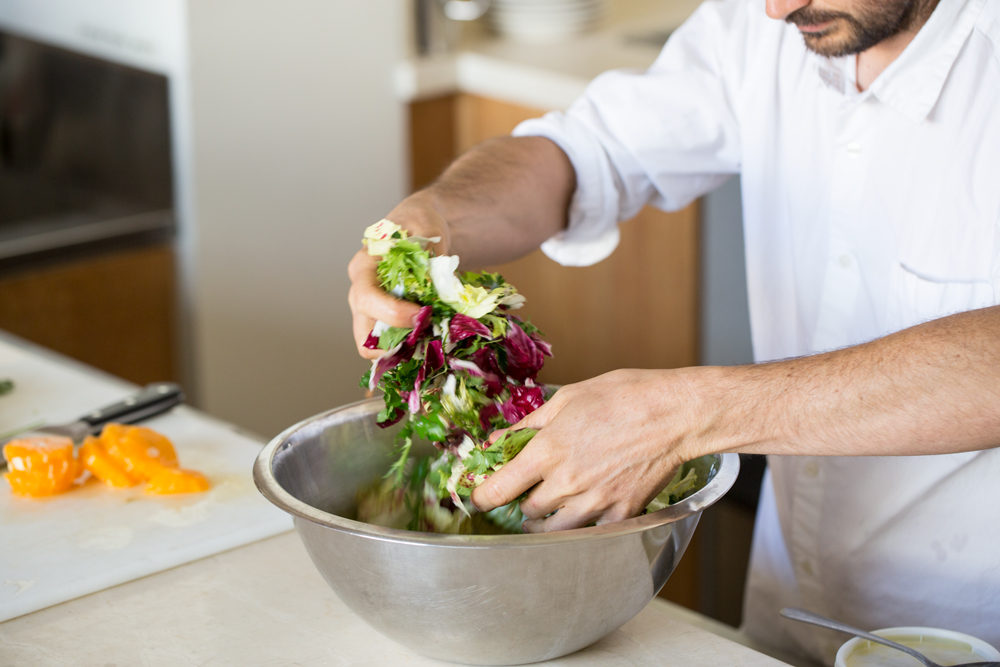
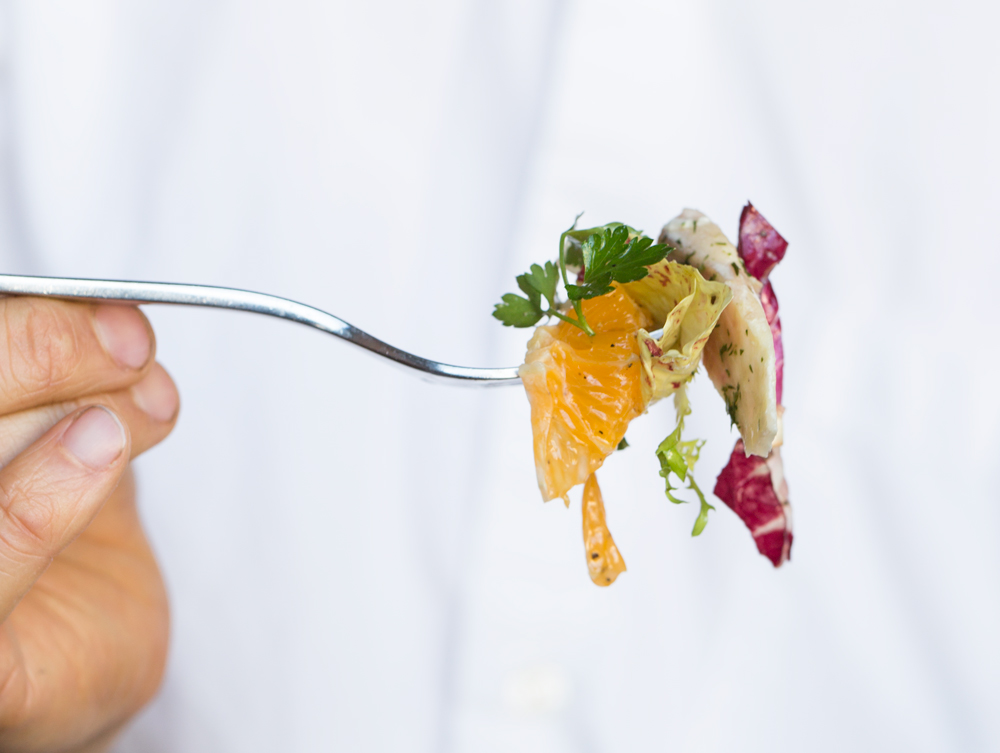
NOTES
These varieties chicory can be hard to find, check your local specialty food shop or farmer’s market. Robert used four different chicories for this salad, but you can use just one if you like. Just get the best smoked trout money can buy
RECIPE
DIFFICULTY
EASY
SERVES
3
PREP TIME
10 MINS
Salad
-
1headfrisée lettuce
-
1headRadicchio Variegato di Castelfranco
-
1/2headescarole
-
1headChioggia radicchio
-
2-3segmented oranges (whatever citrus you prefer)
-
1/4cupraw sliced almonds, toasted
-
1tbsbrined capers
-
1tbsflat leaf Italian parsley
-
1packagesmoked trout
-
salt and pepper to tast
Dressing
-
1tspred wine vinegar
-
1tbslemon juice
-
3tbsolive oil
-
1small clove of garlic, minced
-
salt and pepper to taste
POSTED UNDER
- L.A.
Robert Stelzner and I met in a weaving class many moons ago (the same fated class where I met another SFP guest, Beatrice Valenzuela, whose boutique happens to be right next door to Robert’s store). Robert was the only mysterious man in a class of 10 women, ranging in age from 23 – 80, so of course, I had to get to know him. Though quite nimble on a loom, his path led him to become one of the most lauded representatives of the East Side Los Angeles food scene, with his beautiful market and lunch counter, Cookbook, and restaurant, Cortez.
Robert and his partner, chef and author Marta Teegen, were committed to locating Cookbook in their own neighborhood of Echo Park. Cookbook makes prepared foods inspired by their covetous collection of curated cookbooks and pantry staples, all for sale and on display in a manner so comely, my friend Krissy refers to it as, “the vegetable museum.” They source the best produce, meats, and pantry items with a focus on superior taste and sustainability. Though they carry the crème de la crème, there is attention to practicality; this is no truffle salt and foie gras depot, but they make an effort to carry the ingredients to make real, home-cooked food.
As Cookbook took off, Robert and Marta, decided that really needed a commercial kitchen of their own. So, Cortez, their Moroccan and North African inspired restaurant was born. The restaurant would serve dinner, and also serve as the off-site kitchen to produce the pastries, salads and sandwiches for the market, located a stone’s throw away (by L.A. standards). They would use the same pastured meats, seasonal produce, and pantry items as they were sourcing for the store, so that part of the puzzle was solved. The food is simple and tasty. Nothing fancy — uncomplicated meals made with with excellent ingredients.
For this salad, I met Robert at Cookbook, where we shopped for all of our ingredients, including the Michael Cordon Bleu smoked trout, which is unlike any other smoked trout I have ever had (and I have eaten a lot of smoked trout in my day). Groceries in hand, we drove the company van down the street to Cortez, where Robert cooked for me, impressing me with his industrial salad spinner, and filling me in on what he has been up to in the last 6 years.
Robert Stelzner in His Own Words
Julia: If you own your own specialty food store and restaurant, do you ever go to the supermarket, or do you just raid your own pantry?
Robert: We usually eat extras from the store or family meal at the restaurant. Cookbook’s pantry selection is a reflection of the things we like to eat at home, so we really have everything we would need at our finger tips.
Julia: Do you just think about food all the time? I am already obsessed with food, but if I was around it as much as you are, I think I might cross the line into the realm of the clinically insane.
Robert: I would say i’m always thinking about food because i enjoy it. Not just eating food, which i obviously do, but the things that really interest me are the ideas behind food. Techniques, food histories, culinary cultures, flavor, and of course the farmers & food producers that grow and make our food.
Julia: Are there any metaphors from your experience as a weaver that you might apply to your current approach to food, cooking and business?
Robert: When you begin a weaving project, the options are endless. There are so many different techniques, materials and styles that yield different results. The general idea is the same: you begin with the warp and a weft, but the way in which the threads are interwoven is what determines the final product.
You start with the basic structure and then make it your own, like a recipe.
A recipe should be a basic guide that you tweak and interpret. I’m of the opinion you should always follow a recipe on your first attempt, and then change to suit your taste.
